|
|

2 - A 3/16" piece of steel rod from the hobby
shop is used for an axle. It is marked for cutting at 13 1/2" in length
| |

3 - The rod is shown being cut
and the ends are then flattened
| |

4 - The rod is cleaned with very fine
sandpaper, followed by alcohol
CG. | |
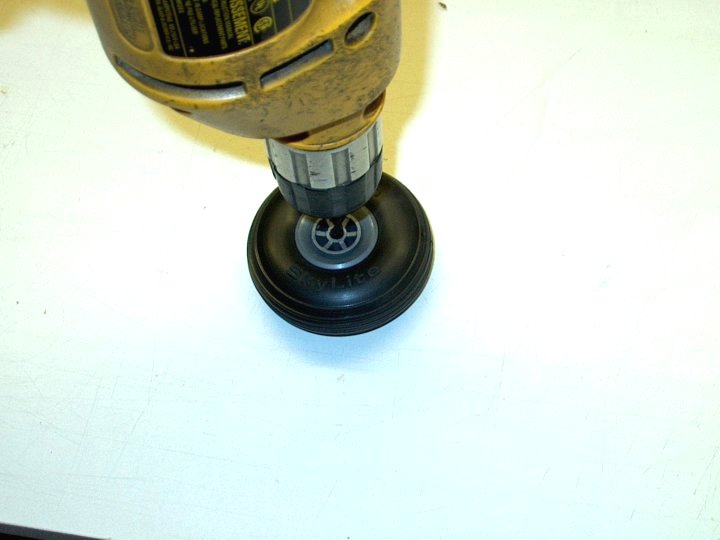
5 - Most wheels have 5/32" axle holes,
so I used a spare pair of 2 3/4" lightweight wheels and
drilled them to 3/16" diameter to fit the axle
| |
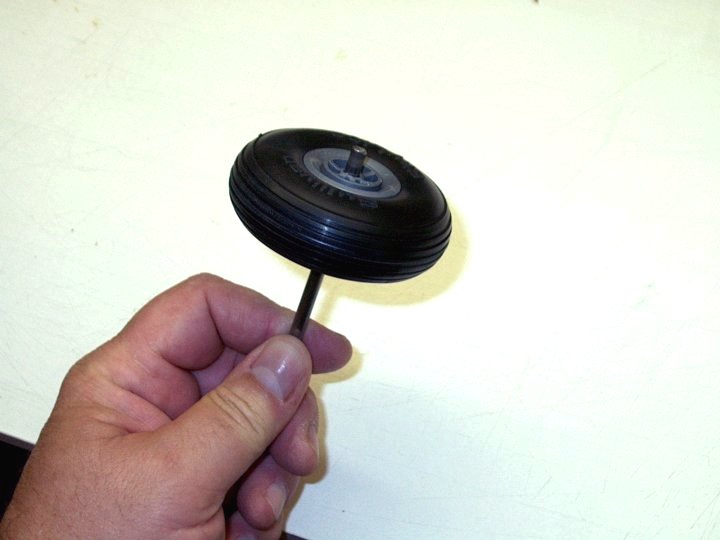
6 - You may have to sand/file the hole
so it spins smoothly and without play on the shaft rod you made
| |
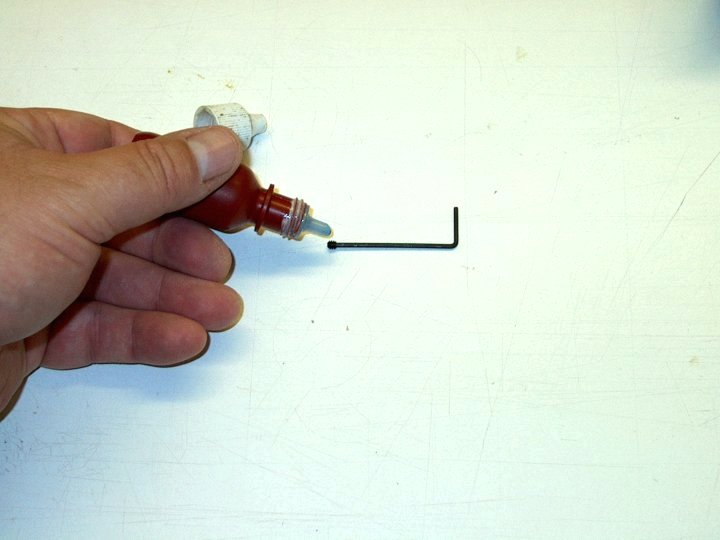
7 - Loktite is used to install the
set screws in six 3/16" wheel collars that are used
| |
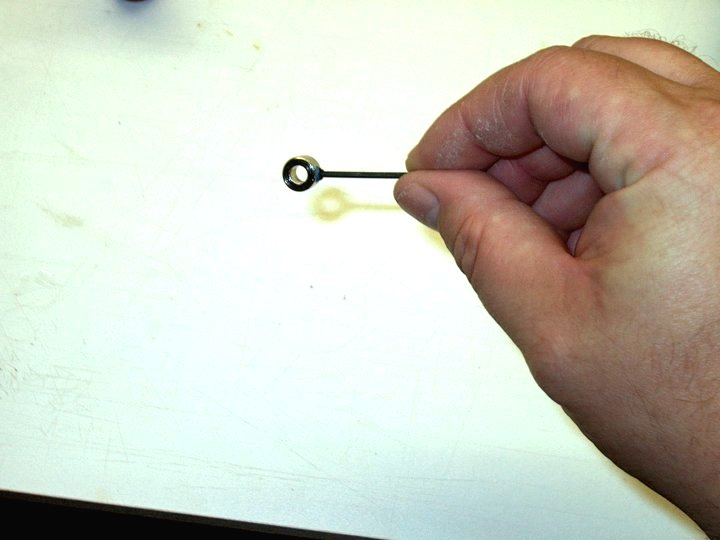
8 - Set screw shown installed in wheel collar
| |
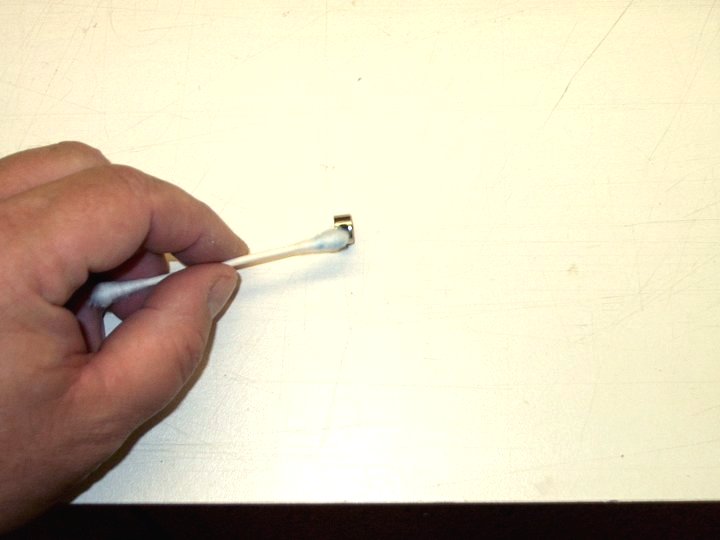
9 - Clean up the excess Loktite with a Q-Tip
| |
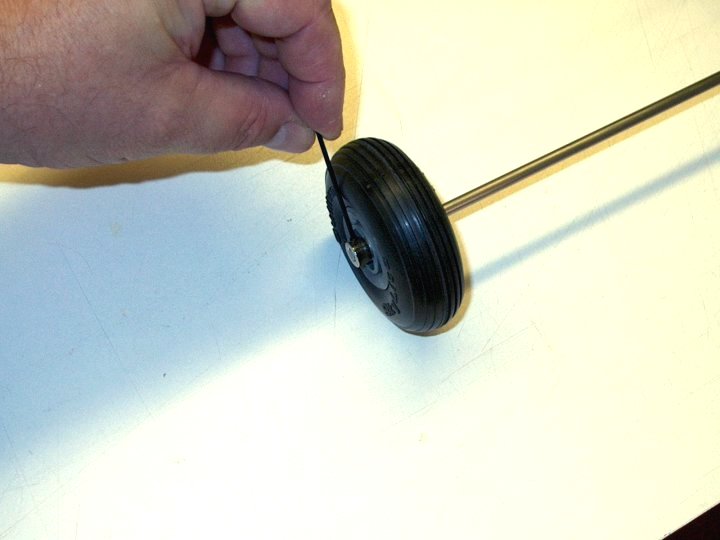
10 - The first Wheel is installed
and the Wheel Collar is tightened flush to the shaft
| |
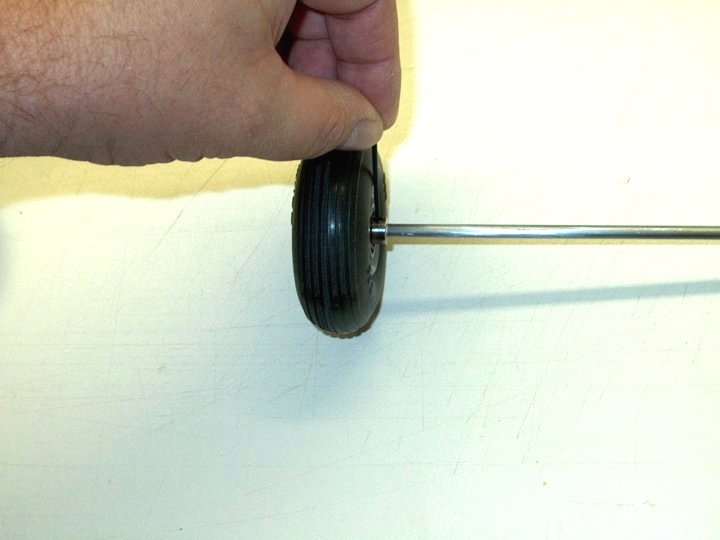
11 - A second wheel collar is
installed to hold the wheel in position. Make sure
the inside wheel collar is not binding so the wheel
can spin freely
| |
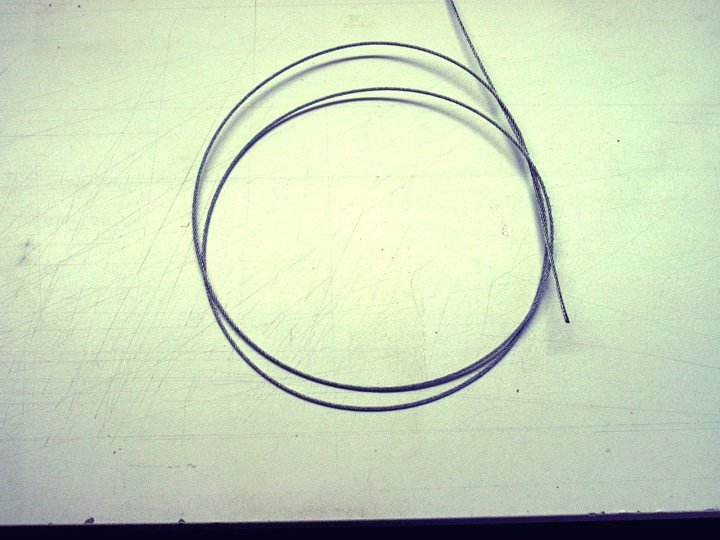
12 - 1/16" braided steel cable is
purchased from Home Depot, Lowes or any other similar store.
You will need about three feet of cable
| |
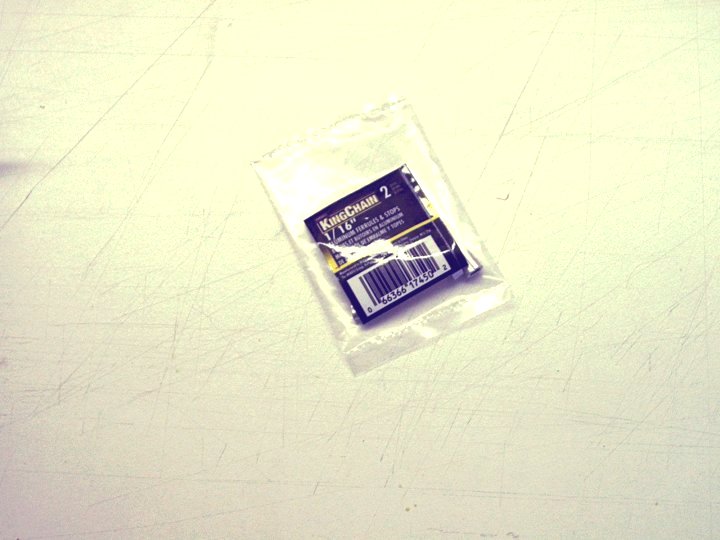
13 - Aluminum Ferrels are also purchased
for the wire. You will need three of them and they come two to a pack
| |
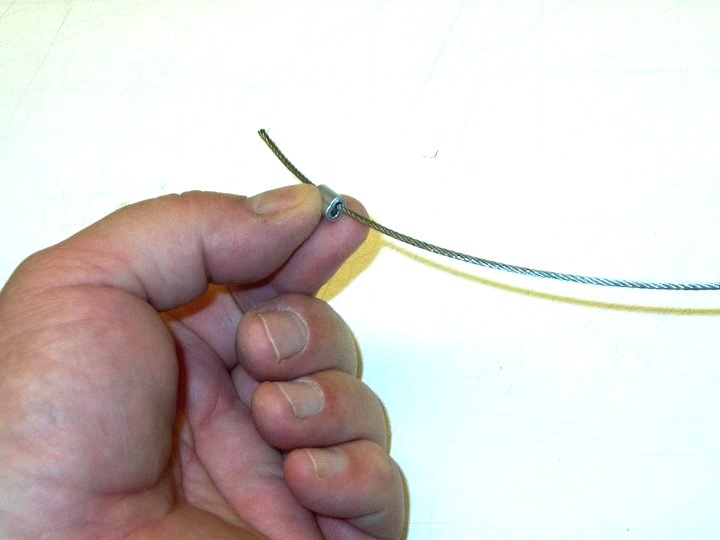
14 - The first ferrel is placed over the wire end
| |
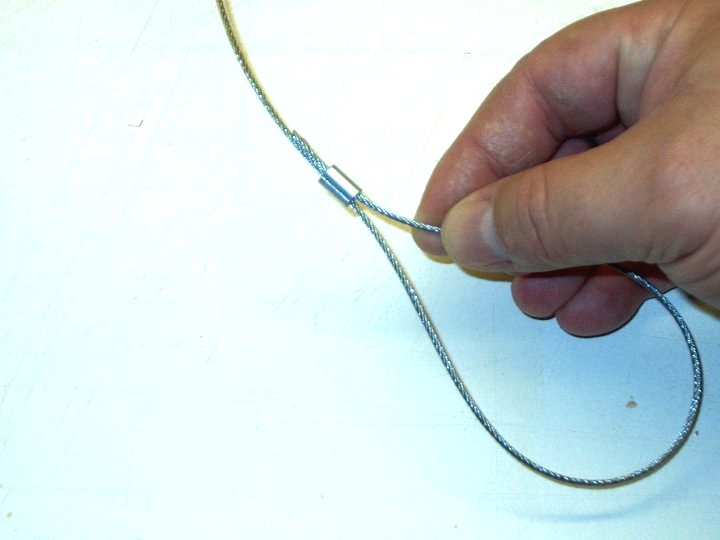
15 - The wire is looped around and
inserted into the other side of the ferrel
| |
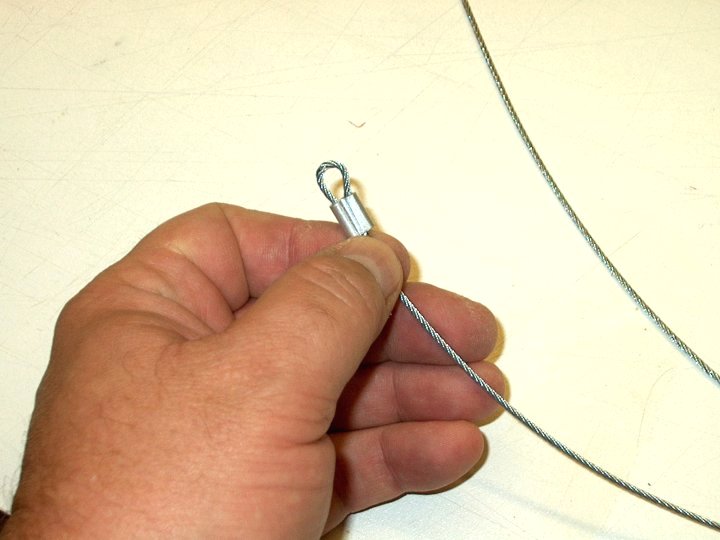
16 - The wire is pulled tight so
that the loop can just fit over the 3/16" axle shaft
| |
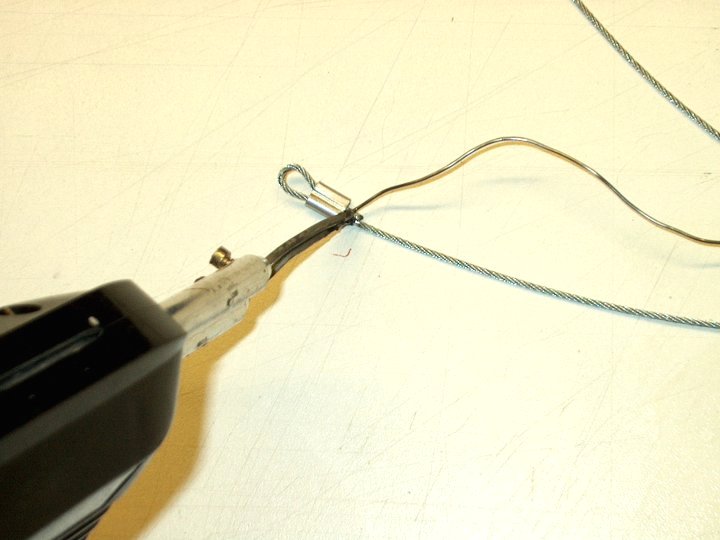
17 - Once crimped, you can solder
the wire together for additional safety
| |
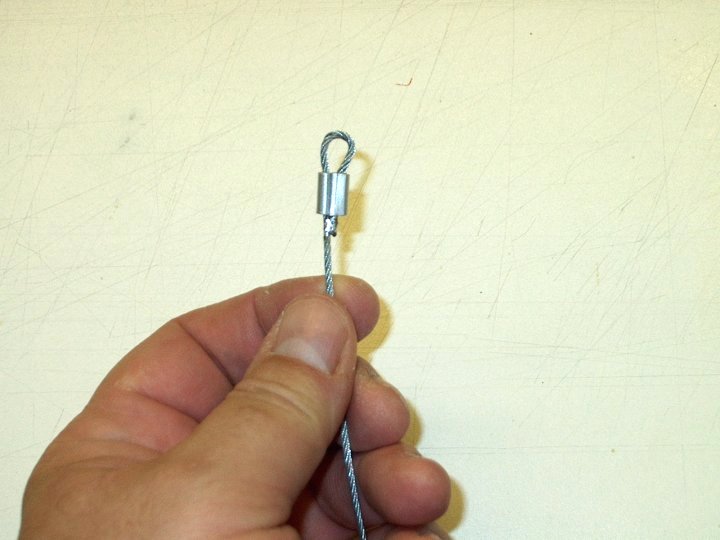
18 - Wire shown crimped and soldered
| |

